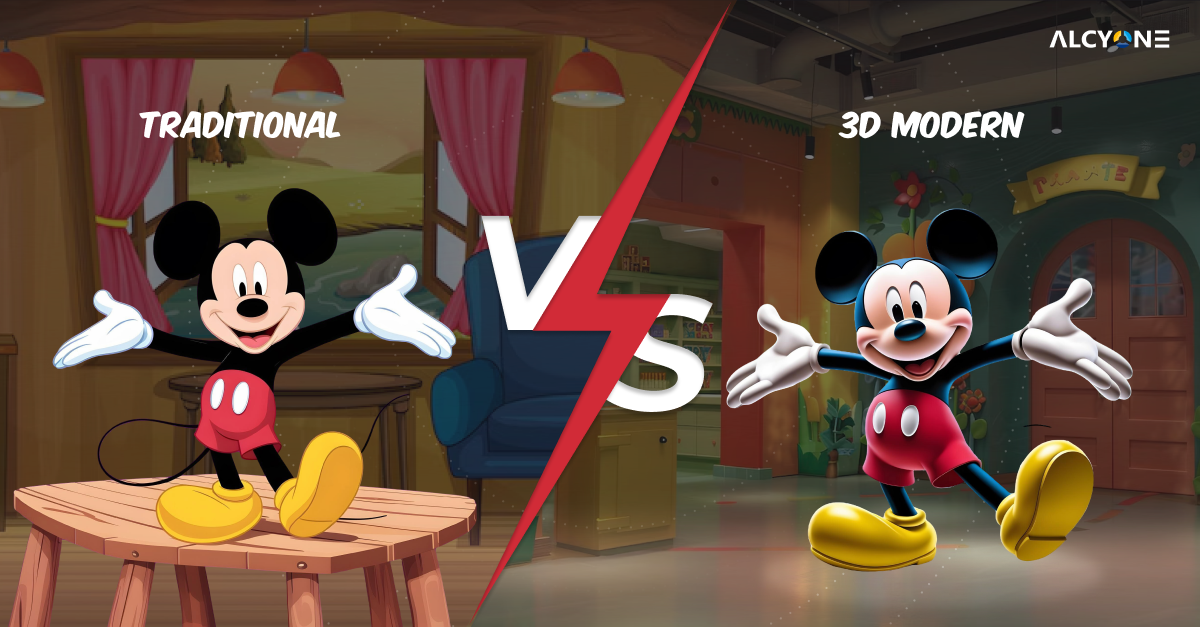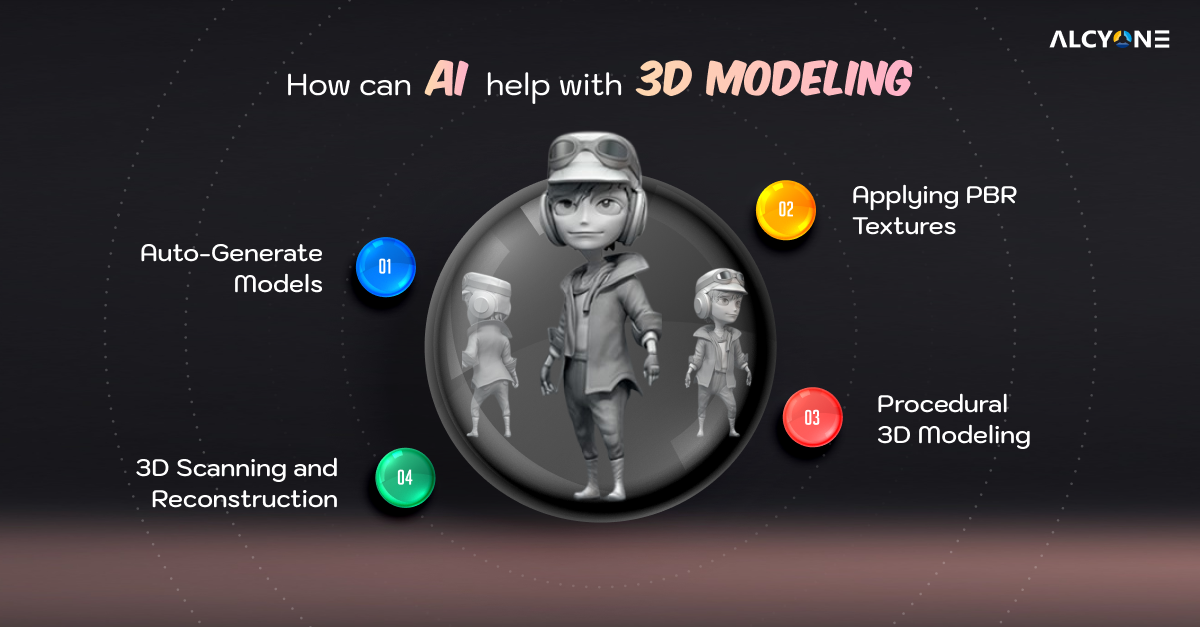The Game-Changing Role of AI in 3D Animation
Let’s be real—3D animation is magical, but it can also be a time-consuming, tedious process. From building characters to perfecting tiny facial expressions, animators have a lot on their plates. But what if there was a way to automate some of those tasks, freeing up creative minds to focus on storytelling and innovation? That’s where Artificial Intelligence (AI) steps in.
In recent years, AI has been making waves in the animation world, bringing with it faster workflows, smarter tools, and more creative possibilities. Whether you’re a seasoned animator or just dipping your toes into the field, AI is here to shake things up in the best way possible. So, how exactly is AI revolutionizing the 3D animation landscape? Let’s dive in!

The Difference Between Traditional and AI-Powered 3D Animation
Traditional 3D animation has been the gold standard for decades. It involves painstakingly modeling, rigging, animating, and rendering each frame by hand. It's like crafting a masterpiece with clay, one tiny detail at a time.
AI-powered 3D animation is a game-changer. It uses artificial intelligence to automate many of the time-consuming tasks, allowing animators to focus on the creative aspects. Think of it as having a digital assistant that can help you sculpt, paint, and even bring your characters to life.
So, What's the Difference?
Time and Effort: Traditional animation is incredibly labor-intensive. AI can automate repetitive tasks, saving time and effort.
Consistency: AI can help maintain consistency in animation, ensuring that characters and environments look consistent throughout a project.
Creativity: While AI can automate tasks, it's still up to human animators to bring creativity and storytelling to life.
Cost: AI can potentially reduce the cost of animation production, as it can streamline workflows and increase efficiency.
How is AI Used in 3D Animation?
AI is becoming the trusted sidekick for animators, handling tasks that used to take up hours, if not days. Here’s a closer look at how AI is making life easier for animators:
Automated Keyframing: Keyframing can feel like the "grunt work" of animation. It involves setting specific frames to control how an object moves over time. You can automate this process with AI, allowing algorithms to create smoother transitions between keyframes. This means less time spent manually tweaking and more time perfecting the final product.
Procedural Animation: AI-driven procedural animation adapts to changes in real-time. Imagine a character walking across different terrains—grass, sand, or concrete. AI adjusts the animation based on those factors, ensuring your character’s movements look natural no matter the environment.
Facial Expressions: AI can map real-life emotions and movements onto 3D characters, making them more lifelike. Rather than spending hours manually animating a character’s smile or frown, AI studies real human expressions and applies them to your digital creations.
Motion Capture Enhancement: Motion capture (MoCap) is already a fantastic tool for animators, but AI is further elevating it. AI algorithms can now refine MoCap data, making the captured movements smoother and more accurate—and without the need for all those bulky tracking suits.
Embrace the Future of Animation with AI—Step Into Innovation Now!
How Will AI Change Animation?
Undoubtedly, AI is here to stay, and it will only change the game in animation. Let’s talk about the future!
Speed Like Never Before: Imagine completing months-long projects in a fraction of the time. AI-driven animation tools can accelerate the animation process by taking care of tedious tasks like rigging, texturing, and motion sequencing, letting animators focus on the creative aspects.
Creative Freedom: With AI handling technical tasks, animators have the freedom to push their creative boundaries. Want to experiment with new styles, character designs, or even entire worlds? AI will handle the groundwork, leaving you with more time to innovate.
Personalized Content: As AI evolves, it’ll open doors to personalized animation experiences. Think about video games that adapt to your individual play style or movies where characters interact with you based on your preferences. AI makes all of this possible by understanding and reacting to user behavior.
Cost-Effective: AI can make high-quality animation accessible to smaller studios. By cutting down on labor-intensive tasks and production time, studios save money—without sacrificing quality.
Can AI Replace 3D Animators?
Ah, the big question—will AI take over the jobs of animators? The short answer is: Not entirely.
Let’s face it, AI is incredibly powerful, but it doesn’t have what human animators bring to the table—creativity, storytelling, and emotional depth. While AI can certainly automate technical tasks, the heart of animation—those rich, emotional stories—still requires a human touch.
Creativity Needs Humans: AI might be good at handling repetitive tasks, but it doesn’t have a sense of creativity or intuition. Story arcs, character development, and emotional beats are things that only human animators can fully bring to life.
Complex Storytelling: Crafting a compelling story is an art form. AI can generate movement and actions, but we'll always need human talent when it comes to delivering a narrative that resonates with audiences. It’s the animators who know how to turn technical animations into something with heart.
Collaboration Over Competition: Think of AI as a tool, not a replacement. It’s meant to work alongside animators, enhancing their abilities rather than taking over their jobs. AI frees up animators from mundane tasks, allowing them to work on the aspects that require human ingenuity.

How Can AI Help with 3D Modeling?
While 3D modeling might not be as glamorous as animating characters, it’s just as critical. And AI is here to help with that, too!
Auto-Generate Models: AI can automatically generate 3D models based on specific input data. This cuts down on the need for an artist to create every model from scratch. From buildings and landscapes to complex characters, AI can whip up a base model that you can then fine-tune.
Applying Textures: One of the more tedious aspects of 3D modeling is applying textures and materials. AI can analyze real-world objects and automatically apply realistic textures to models. This saves time and ensures consistency, particularly in large projects like games or films.
Procedural Modeling: Imagine needing to create an entire cityscape for a game. Instead of designing every building, AI can generate procedural models that follow specific rules. This makes it easy to create massive environments quickly, without sacrificing detail.
3D Scanning and Reconstruction: AI algorithms can convert 2D images or videos into 3D models by analyzing depth, perspective, and object dimensions. This is a game-changer for industries like fashion, architecture, or gaming, where real-world objects can be easily digitized and animated.
Conclusion: AI + 3D Animation = The Future
It’s safe to say that AI is transforming 3D animation in ways we couldn’t have imagined just a few years ago. By speeding up workflows, enhancing creativity, and automating the grunt work, AI allows animators to focus on what really matters—telling amazing stories. While AI might be able to handle some of the technical stuff, it’s the human animators who’ll continue to breathe life and emotion into these creations.
So no, AI isn’t here to replace 3D animators. Instead, it’s a tool—one that’s helping animators work smarter, faster, and more creatively. As AI continues to evolve, it’s going to open up new opportunities for collaboration, creativity, and storytelling.
Whether you’re an animator, a designer, or just someone fascinated by the intersection of tech and creativity, AI is changing the game—and this is just the beginning.
Are you ready to dive into the world of AI-powered 3D animation? The future is waiting!
 Explore the Metaverse World: Your Gateway to a Virtual Experience!
Explore the Metaverse World: Your Gateway to a Virtual Experience!
 Why Hire Skilled AI & ML Developers Now [Top 7 Benefits]
Why Hire Skilled AI & ML Developers Now [Top 7 Benefits]